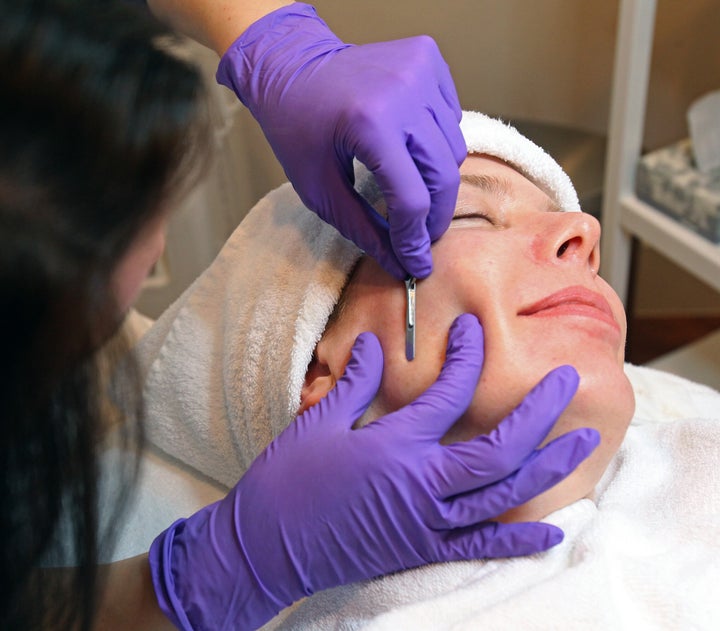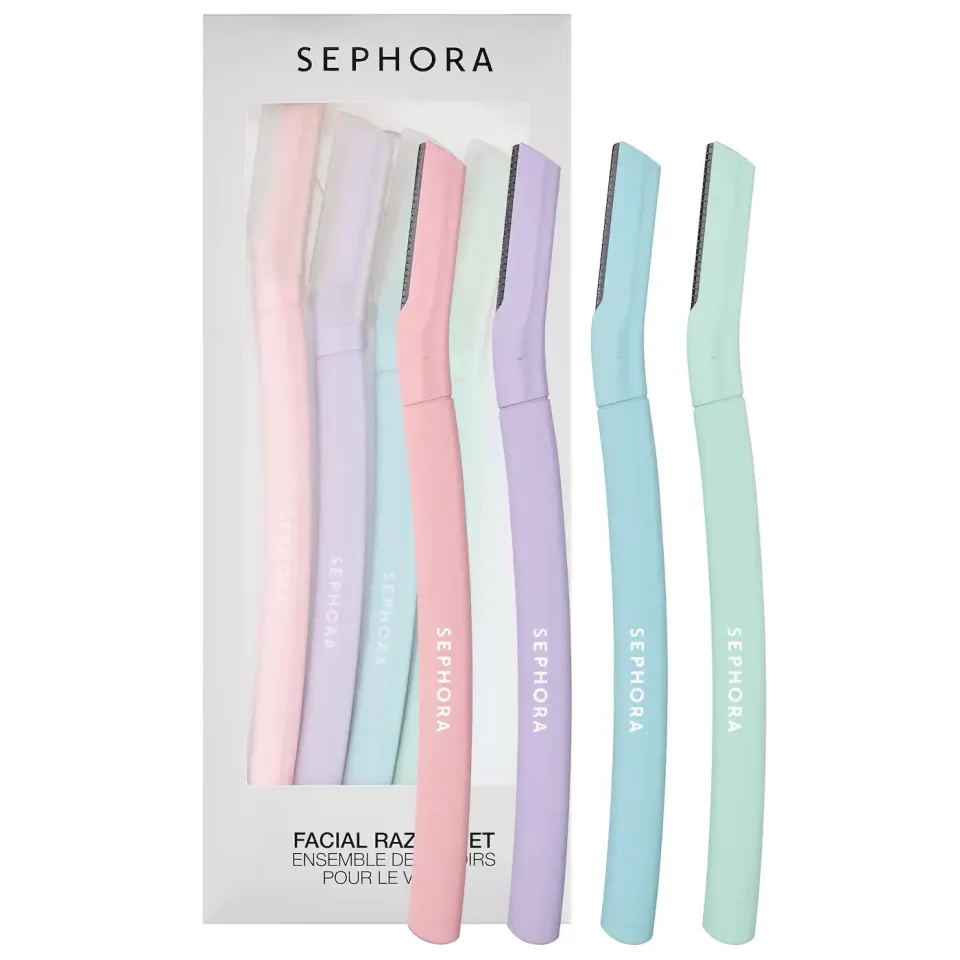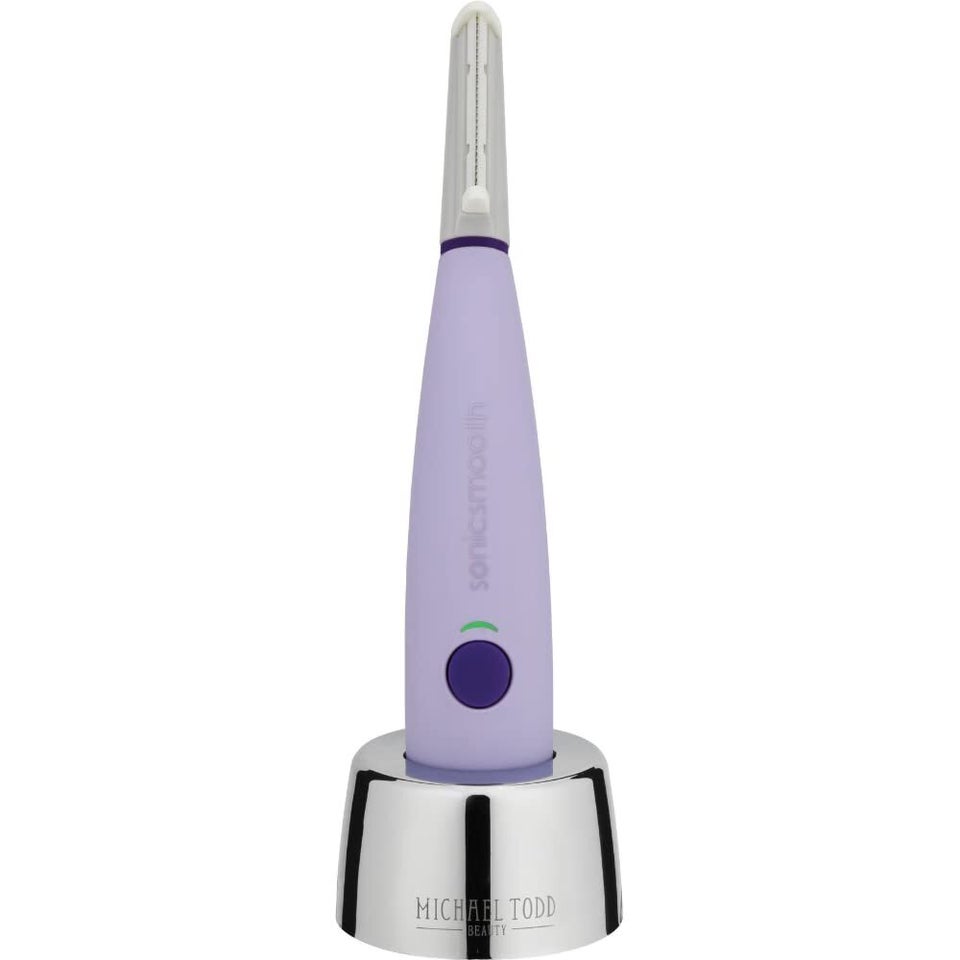
Dermaplaning videos are everywhere on TikTok, and it’s pretty satisfying to watch all that peach fuzz just fall off people’s faces. Beyond that, some users are claiming to have their best skin ever (think: smoother, softer and clearer) thanks to the technique. But can this process, which involves the removal of facial hairs with a razor blade-like device, actually be done safely at home, as social media suggests?
According to experts, yes — but people should take precautions and make sure they’re educated on how to properly dermaplane. Furthermore, it’s important to know if you are a good candidate and whether claims of the practice’s purported benefits are valid.
A dermatologist and plastic surgeon told HuffPost exactly what to know about at-home dermaplaning.
At-home dermaplaning can be safe, when done properly.
“Dermaplaning is safe to do at home,” said Dr. Daniel Belkin, a board-certified dermatologist at the New York Dermatology Group, with the goal being to “achieve gentle exfoliation, which can give the skin a glow and more luminous appearance.” During the process, Belkin explained, “a blade is gently passed over the skin to remove hair, debris and a bit of stratum corneum, the top layer of skin that consists of dead, flattened skin cells. These dead cells are protective, but when excessive can cause a dull appearance to the skin.”
Still, you should proceed with caution. “Being overly aggressive or trying to exfoliate deeper is a mistake, as you will create micro-injuries that increase allergy, irritation, redness and discoloration; or worse, macro-injuries that lead to bleeding and scarring,” Belkin said.
Know what dermaplaning can — and can’t — do.
The most important factor to consider when deciding whether to dermaplane is whether the goal you are hoping for can realistically be achieved. “The main thing to be wary of is false claims,” Belkin cautioned. He said, despite some assertions, that dermaplaning is not a solution for reducing fine lines and wrinkles, shrinking pores, minimizing future breakouts or decreasing the appearance of acne scars.
“It can improve the look of skin, but for most people, it will have minimal impact on skin health,” Belkin said.
Still, there is much that dermaplaning can do. According to Belkin, that includes eliminating peach fuzz and giving the skin a more glowing and luminous appearance through gentle exfoliation.
Moreover, it can make your skin care routine more productive and your makeup look better. “Exfoliation can reduce the skin barrier such that topicals can penetrate more effectively,” Belkin said. “By removing peach fuzz and excess dead skin cells, the skin will be smoother and more light-reflective, allowing a more elegant application of cosmetics.”
It’s important to select the appropriate tools and techniques.
Professional dermaplaning, “which is done with a tiny scalpel called a dermatome,” is not safe for untrained professionals to tackle themselves, said Dr. George Bitar, a board-certified plastic surgeon in Washington, D.C. The safe route, he said, involves “drug/beauty store versions that use tiny straight razors that are single blades on plastic handles” that are lightly rubbed over the skin.
“One tool that works nicely is Sonicsmooth by Michael Todd Beauty,” Belkin added.
Before you begin your first at-home dermaplaning session, you’ll want to educate yourself on the process, which is different from shaving. Bitar recommended watching how-to videos from a board-certified plastic surgeon or dermatologist — so not just any influencer on TikTok — and properly sterilizing your device.
“Be very gentle and precise,” cautioned Bitar, who suggested holding the facial skin taut with one hand while gliding the device over the skin using light, short, downward motions at a 45-degree angle with the other. “You will know it is effective when you see dead skin and hair fall off as you proceed. ... When finished, wash your face with a mild, gentle cleanser, moisturize, and be sure to wear SPF of 30 or more if you will be outside. Dermaplaning only needs to be done once a month.”
Still, Bitar warned, “even when done correctly, dermaplaning causes temporary irritation because it slightly disrupts the skin’s barrier, which keeps it hydrated and protected.” So if it’s the day before a big event, you might want to skip it.
Avoid dermaplaning if you have certain skin conditions.
“If someone does not correctly assess if they are a good candidate, they can worsen any pre-existing skin conditions,” Bitar explained, adding that anyone with active acne, psoriasis, rosacea, or eczema should likely avoid dermaplaning altogether because it can cause additional irritation. “Those with active acne can exacerbate it by leaving the skin vulnerable to more bacteria.” Additionally, steer clear of cuts, rashes, open wounds, or cysts, he said.
The best way to find out if you’re a good candidate? “Consult with a board-certified dermatologist or plastic surgeon,” Bitar said.
The safest option might still be at a professional’s office.
If at-home dermaplaners don’t follow proper protocol, they can damage their skin. “I have seen infections and scarring when patients were too aggressive or purchased medical-grade tools on their own,” said Bitar, who has had to treat the resulting scar tissue with steroid injections and prescribe antibiotics for infections caused by poor dermaplaning technique.
“If you want to be as safe as possible, have professional dermaplaning performed in a board-certified plastic surgeon’s office or a dermatologist’s office,” Bitar added. Another safe alternative, he noted: a medi-spa, but “be sure a properly trained licensed aesthetician is performing the procedure under the most sterile circumstances.”
HuffPost may receive a share from purchases made via links on this page. Every item is independently selected by the HuffPost Shopping team. Prices and availability are subject to change.


